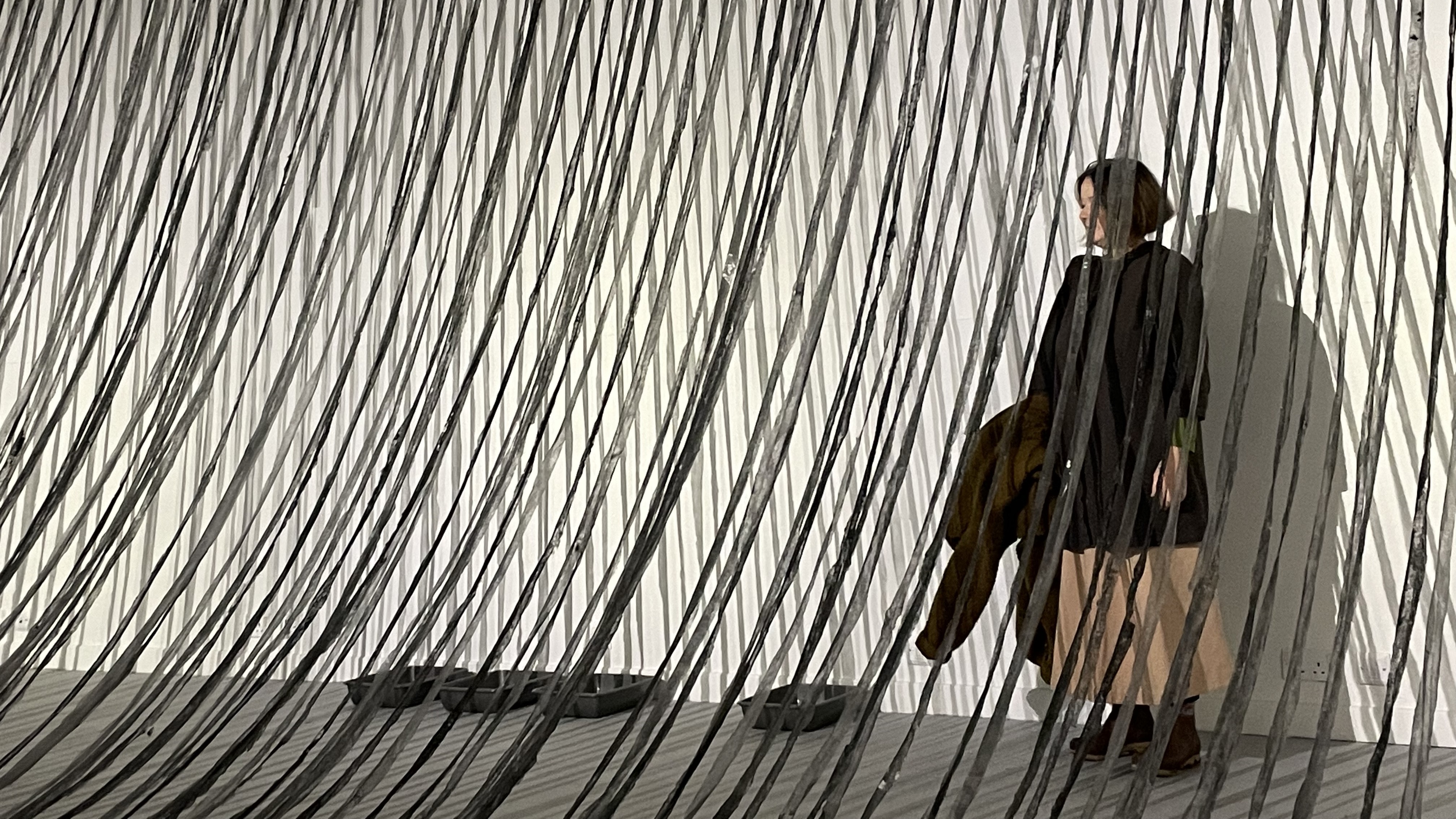Nuclear Information Centre
What about the Waste? (2022)
NIC/GD/005

Nic Pehkonen, What about the Waste?, 2022 [100 x 10m black paint-soaked horticultural fleece strips each ending in an 8cm section of 1” diameter lead pipe]. Approximate dimensions: 6m (width) x 4m (height) x 6m (depth).




As of 2025, the UK is now almost seven years into its latest attempt to “solve” the ongoing conundrum of safely managing its past, present, and future inventory of radioactive waste which, along with the radioactive contamination left from overseas nuclear weapons testing, is the most enduring and hazardous by-product of British civil and military nuclear programmes since the late 1940s.
Following the example of Finland and other countires, the government has initiated a consent-based process led by Nuclear Waste Services (NWS), a subsidiary of the Nuclear Decommissioning Authority (NDA), to find a suitable site in which to construct a geological disposal facility (GDF) for the permanent containment of high and intermediate level radioactive waste (HLW and ILW). This will take the form of a network of tunnels and vaults extending deep underground into which the packaged waste will be placed and sealed off, in effect buried alive as the radioactivity gradually decreases down to projected safe levels over hundreds of thousands of years.
As an installation, What about the Waste? is conceived as a three-dimensional “factsheet” or perhaps even a non-site of a non-site, highlighting selected empirical and projected data associated with the future but still unknown siting, construction, functionality, and timelines associated with geological disposal.
The exhibit comprises 100 x 10m, floor contaminated paint-soaked strips of horticultural fleece, hung as physical yet partially tangled representations of generic radioactive half-life decay curves, each one ending in a section of lead pipe. Official estimates suggest that to construct and populate a GDF will take around 100 years, so this installation also becomes a messy, metaphorical timeline where each entangled curve roughly equates to one calendar year. The total combined length of 1km is the maximum vertical depth to which the proposed GDF will extend, either below ground or under the seabed. In the gallery installation you are invited to venture into the space between the wall and hanging curves, as if situating yourself in amongst the slowly decaying waste, albeit on a short-term, temporary basis.
The lead pipe sections echo the proportions of the canisters of vitrified high-level waste which will be grouped within larger packages before being deposited within a GDF. The uranium present in spent nuclear fuel, which comprises the majority of the UK’s high-level radioactive waste, will ultimately decay into stable isotopes of lead, a process that will play out over geological timescales.
Information last updated: Thu 02 Jan 2025
Back